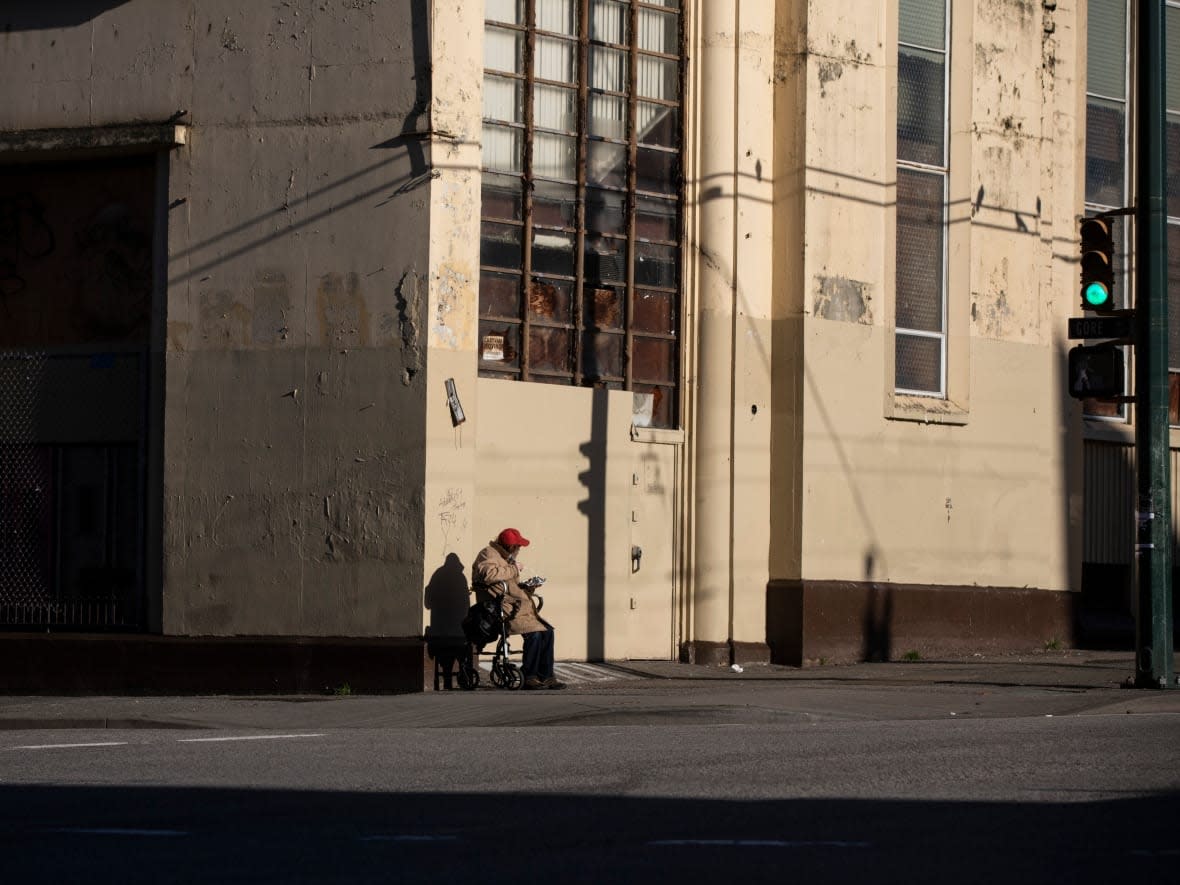Rising costs force British Columbians on living, disability assistance to make tough choices

When Shauna Milne goes to the grocery store these days, she says she has to figure out ways to stretch her limited income to feed her two teenage sons and herself.
Because of rising costs, fresh produce isn't an option, says the single mother who lives in Surrey, B.C. Instead she relies on frozen and processed foods.
"If I skip one or two meals, that's what I have to do," said Milne, who describes herself as an "insulin-dependent diabetic, with neuropathy," which causes her to lose sensation in her feet.
She adds that she's had seven surgeries on her left leg, can't stand for long periods, and is beginning to lose control of her hands.
As the cost of living continues to skyrocket across the province and country, people living on income and disability assistance are forced to make difficult decisions, like choosing between groceries and medication.
Milne and other people who live with disabilities have long called for increases to disability and income assistance rates, which they say leave recipients living far below the poverty line.
According to Statistics Canada, people living with disabilities have a significantly higher rate of poverty and unemployment than the overall population.
Income disparity
Over the last year, the cost of groceries in the province has risen 9.1 per cent, according to B.C. Stats. Rental costs have gone up by 6.4 per cent and gasoline prices by 32.8 per cent.
Milne, who receives income assistance — while she waits for her application for disability assistance to be approved — says she spends her entire income on rent for a two-bedroom basement suite.
In B.C., a person on income assistance receives $935 per month, while a person on disability assistance receives $1,358 per month.
She says she also uses the Canada Child Benefit — a monthly tax-free payment from the federal government to help families with the costs of raising children — to cover the remainder of her rent, bills, medications and food.

Milne says she feels depression, anxiety and a sense of failure. For the past five years, she says, she hasn't been able to work due to her disabilities.
"I hate my four walls. I wish I was out there working and being a part of society. I really do," she said.
Heather McCain, founder of the non-profit Creating Accessible Neighbourhoods, says disability assistance rates in B.C. are far below what is required.
"Every increase, whether it's cost of living, or food, or gas, impacts disabled people who are already having a hard time surviving," they said.
Disability assistance rates were frozen for a decade under the B.C. Liberal government, and while there have been minor increases since the B.C. NDP came into power, McCain says the rates still haven't kept up with the costs of living.
"I think it's very short-sighted of the government to not increase the rates because it's preventative," they said.
"It helps people to be more involved in their communities, have jobs, volunteer. By not increasing the rates, they are going to create higher health-care costs."

Jewelles Smith, a disability activist who recently completed her PhD in gender and critical disability studies, says the income disparity was especially apparent when the federal government set the Canadian Emergency Response Benefit (CERB) rates at $2,000 — almost $700 more than disability income assistance.
"It tells me that the government doesn't think about the cost of living with a disability at all," said Smith.
"And that it's perfectly fine for people who are forced to go to the government for their basic needs to live in abject poverty."
Government urged to do more
During the pandemic, the government added a $300 monthly subsidy to the income and disability assistance rates.
The subsidy was later cut to a permanent increase of $175 per month for both rates, but Dan Davies, the B.C. Liberal critic for poverty, says it's not enough.
"We are still pushing government to give back the $300 dollars, especially now," he said.
Nicholas Simons, minister of social development and poverty reduction, said in a statement that income and disability rates have increased three times in four years.
"While we have taken big steps over the past few years, there is more work to do, and we'll continue to look at ways we can bring costs down for people," he said.
But advocates like McCain and Smith say incremental increases make little difference when the income gap is already so big, and both are calling for rates to be raised to CERB levels at least.
Milne extended a personal invite to the government.
"Come out to Surrey, Langley, Abbotsford and see what these rents are doing to people," she said. "And actually do something."


